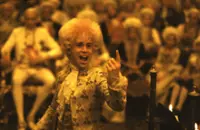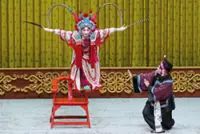A close-up detail of Stephane Mandelbaum's artwork 'Francis Bacon I' (etching plate, copper 1980). Photo: Galerie Zlotowski
It’s a bizarre story, even for the art world.
In 1986, a promising 25-year-old Belgian artist named Stéphane Mandelbaum was ever so slightly adrift. He’d left home and settled in a Jewish neighbourhood in Brussels. Although he’d grown up in a secular household-his father was the son of Polish Jews who fled the Nazis, his mother was Armenian-he’d become preoccupied with Judaism as a teenager and had begun to teach himself Yiddish.
Already a subscriber? Log in
Save 30% OFF The Star Digital Access
Cancel anytime. Ad-free. Unlimited access with perks.





